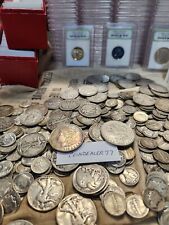Rare coins have long been cherished by collectors and investors alike. Their unique characteristics and finite quantities offer a tangible piece of history that can also serve as a strategic investment vehicle. As we delve into the multifaceted world of rare coin collecting and investing, it is essential to consider the inherent opportunities and challenges that may influence the value and appeal of these fascinating artifacts.
Rare coins have long been cherished by collectors and investors alike. Their unique characteristics and finite quantities offer a tangible piece of history that can also serve as a strategic investment vehicle. As we delve into the multifaceted world of rare coin collecting and investing, it is essential to consider the inherent opportunities and challenges that may influence the value and appeal of these fascinating artifacts.
The Allure of Rare Coin Investing
The allure of investing in rare coins lies in their historical significance, aesthetic beauty, and the thrill of the hunt for those elusive pieces that can complete a collection or stand alone as a singular investment. Unlike more volatile securities such as stocks or bonds, rare coins are tangible assets whose worth does not directly correlate with stock market trends. Rarity, condition, historical importance, and collector demand dictate the market value of rare coins.
Potential for Long-Term Appreciation
A prominent feature of rare coin investing is the potential for substantial long-term appreciation. For instance, select coins have enjoyed remarkable gains, vastly outperforming their initial metal value. This is exemplified by certain elite coins that experienced a staggering appreciation of more than 1,000% in just four years from 1976 to 1980 and another 600% surge between 1982 and 1989. Such gains underscore the potential that rare coins have as a formidable investment when held over extended periods.
Diversification: A Key Investment Principle
The concept of diversification is central to a well-structured investment portfolio. Incorporating rare coins alongside traditional financial instruments can mitigate overall portfolio risk and cushion the blow of market volatility. Diverse collections can include a blend of U.S. coins, bullion coins, and storied pieces such as the double eagle gold coin.
The Long-Term Nature of Coin Investing
Rare coin investing is typically not suited to those seeking rapid turnover and immediate profit. It is inherently a more deliberate and patient endeavor that requires time to bear fruit. Collectors and investors must carefully research and construct a balanced portfolio, allowing time for their selections to appreciate in value.
Understanding Market Variability and Risks
As with any investment, rare coins come with their own set of risks, and values may fluctuate due to market dynamics. While generally more stable than other investment forms, the market for rare coins can still experience periods of volatility, influenced by shifting collector interest and trends. Understanding these potential risks and market movements is essential for any investor.
Getting Started with Rare Coin Investment
Those new to coin investing should seek the knowledge and guidance of experienced numismatists or coin dealers, who can offer invaluable insights. Attendance at coin shows, active participation in coin clubs, and a commitment to ongoing education through reading specialized literature are all important steps in developing expertise in coin valuation and investment.
Steer Clear of Market Bubbles
Investors should be wary of market bubbles, which can drastically inflate prices before inevitably bursting. It's crucial to maintain a rational approach to investing, avoiding impulsive decisions driven by short-term market euphoria.
The Unpredictability of Individual Coins
Every rare coin is a singular entity, with unique factors that contribute to its value. Even seemingly similar coins can differ in worth based on subtle variations in condition or historical context. Knowledge of these nuances is critical for successful investment and requires diligent study and expertise.
The Role of Numismatists
Numismatists, or coin collectors, can be hobbyists, academics, or professional dealers. Aspiring investors would do well to leverage the collective wisdom of these enthusiasts, often facilitated through organizations like the American Numismatic Association.
The Question of Appreciation
While rare coins typically have the potential to increase in value over time, this market lacks guaranteed outcomes. Careful portfolio management and an understanding of the factors that affect coin value are indispensable for yielding positive returns.
Avoiding Pitfalls in Coin Purchases
The rare coin market can harbor the risks of counterfeiting and coin doctoring, where coins are deceptively altered to increase perceived value. To circumvent such pitfalls, prospective investors should prioritize transactions with reputable dealers and consider only coins that have undergone certification by recognized grading services like the Professional Coin Grading Service (PCGS) or Numismatic Guaranty Corporation (NGC).
Conclusion
Investing in rare coins can be both enriching and profitable, providing a fascinating avenue for portfolio diversification and potential wealth growth. A thoughtful, well-researched strategy coupled with prudent investment choices forms the bedrock of successful rare coin investment. By harnessing expert knowledge, remaining vigilant against counterfeits, and adhering to a clear-headed investment philosophy, collectors and investors can navigate this unique marketplace and relish the rewards that rare coins offer.
Information for this article was gathered from the following source.




